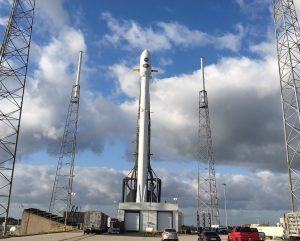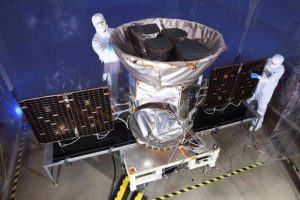The Transiting Exoplanet Survey Satellite, TESS, is NASA’s latest mission to find life on other planets. It succeeds the Kepler Space Telescope and launched aboard a SpaceX Falcon 9 rocket. The mission aims to discover thousands of exoplanets, planets outside of our solar system that orbits a star, of all sizes.
NASA, Boeing and SpaceX
SpaceX and Boeing are contractors hired by NASA. The original plans were for SpaceX and Boeing to help NASA with two commercial space efforts. One is for Commercial Resupply Services (CRS) and the other is the Commercial Crew Programme (CCP). Since the Space Shuttle Programme was finished in 2011, NASA hasn’t been able to send astronauts to space using their own technology. Instead, they purchase seats aboard the Russian Soyuz spacecraft, built by company RKK Energia.
So why has NASA partnered with SpaceX and Boeing?
In a bid to bring these operations back to the US, NASA partnered with the two American giants; who have been funded to provide a cheaper alternative. Originally intended to start in 2016, both companies had faced delays to its spacecraft, with flights now pushed back until 2019.
Here is the price comparison of costs between using Boeing and SpaceX, and NASA building their own spacecraft:
| NASA | Boeing | SpaceX | |
| CRS Missions | $272,000/kg of cargo | N/A | $89,000/kg of cargo (67.3% saving) |
| CCP Missions | $1,677 million | $654 million (61% saving) | $405 million (76% saving) |
TESS
TESS sat ontop a SpaceX Falcon 9 at Cape Canaveral, FL, Spaceflight101
[clickToTweet tweet=”#NASA’s new Transiting Exoplanet Survey Satellite (#TESS) launched on April 18th aboard a #SpaceX #Falcon9 rocket. TESS was developed by #MIT with its ultimate goal being to provide a new catalogue of planets. #Space #futurism” quote=”NASA’s new Transiting Exoplanet Survey Satellite (TESS) launched on April 18th aboard a SpaceX Falcon 9 rocket. TESS was developed by MIT with its ultimate goal being to provide a new catalogue of planets.”]
NASA’s new Transiting Exoplanet Survey Satellite (TESS) launched on April 18th, 2018 aboard a SpaceX Falcon 9 rocket from Cape Canaveral Air Force Station, Florida, USA. TESS was developed by the Massachusetts Institute of Technology (MIT) with its ultimate goal being to provide a new catalogue of planets. Interesting to note, the satellite will act more like a “finder scope”, picking out thousands of planets and paving the way for more advanced observatories. Due to its small size, TESS is unlikely to get much detail but will be able to catalogue a large area of space at one time.
The ultimate goal is to find potentially habitable planets. These will be worlds that orbit their main star at a far enough distance for water to exist on the surface, improving the chances of hosting life. Of course, this opens up the opportunity to find life as well. So far, there are a few planets under our discovery that fit this description; Proxima Centauri and TRAPPIST-1. Researchers are aiming to identify about 50 of these worlds with a diameter of fewer than four times that of Earth’s and 500 with a diameter of twice that of Earth.
TESS’s Operations
The Transiting Exoplanet Survey Satellite, The Independent
In order to catalogue as much of the sky as possible, NASA has split the operation into two parts. Firstly, TESS will operate in the Southern Hemisphere (for the first year) and will move onto the Northern Hemisphere for the second year. This is further broken down into cycles of 27 days. Each cycle will consist of the satellite facing a fixed direction, pointed away from the sun, causing it to “oscillate in a 13.7-day orbit between 67,000 and 232,000 miles above Earth’s surface”. It’s worth mentioning that TESS will follow an orbit not seen before. Most satellites use a geosynchronous orbit, which means they are fixed at about 22,236 miles from Earth. TESS’s minimum orbit is over triple that, and at max height will be over 10 times the height. During the lowest pass, the satellite will transmit images, video and all other data to stations on the ground. Why does it use this orbit? The resulting orbit time of 13.7 days means it will be able to capture the sky in a faster time, thus in-keeping with their operation-time goal of 2 years.
So how does it do it? Like Kepler, TESS will detect small dips in light as it looks towards a star. The dip in light is caused by a planet orbiting said star. This is known as a transit. It will accomplish with four 100mm-wide 16.8-megapixel optical cameras. Each camera comes equipped with seven lenses and four Charge-Coupled Device (CCD) image sensors. The cameras will cover a 24×24 degree patch of sky, “large enough to fit the Orion constellation”. Due to its planned direction finding, as detailed above, the satellite will be able to scan thousands of exoplanets. This opens up the way for technology like the Hubble Space Telescope, or the James Webb Space Telescope, to study these new planets in a lot more detail. The James Webb Space Telescope is slated for the year 2020 launch with the goal of better-characterising planet atmospheres.
According to TESS’s principal investigator, George Ricker, “public data releases will occur every four months, inviting immediate community-wide efforts to study the new planets.” Meaning we will be able to keep up with investigations and be a part of the discovery.
Next in the series, Wednesday 23rd May 2018…
Tech of the week #11: Ulo – The smart-home-ready, customisable security owl
With a beak that doubles as a two-way mirror, Ulo is the interactive surveillance camera that communicates through eye expressions. More than that, this technology has sensors, microphones, Wi-Fi, app integration, speakers and an LCD screen that can be customised in a variety of ways…
If you want to talk tech or astronomy, but not astrology, find me in the Twitterverse @JoshuaOsborn16.
I work for Compare the Cloud as programme manager. I enjoy cybersecurity, fintech and, on the less boring side of things, photography, trains (I said less boring, right?) and, like everyone else, music.





